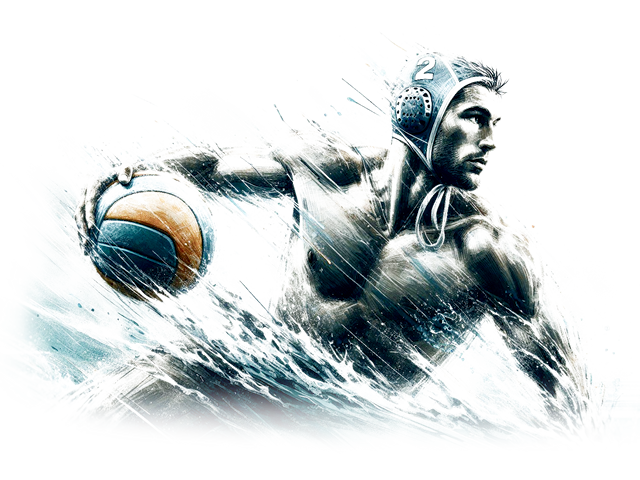 20.09.2024 - Water polo is a dynamic and exhilarating sport that combines elements of swimming, soccer, and basketball. Played in a pool, it requires both physical endurance and strategic thinking. This blog post will explore the goals and rules of water polo, highlight the latest Olympic and world champions, and provide guidance on how to start playing this sport as an amateur.
20.09.2024 - Water polo is a dynamic and exhilarating sport that combines elements of swimming, soccer, and basketball. Played in a pool, it requires both physical endurance and strategic thinking. This blog post will explore the goals and rules of water polo, highlight the latest Olympic and world champions, and provide guidance on how to start playing this sport as an amateur.
The Goals and Rules of Water Polo
The primary objective of water polo is to score more goals than the opposing team. Each team consists of seven players: six field players and one goalkeeper. The game is played in four quarters, each lasting eight minutes. If the game ends in a tie, overtime periods may be played to determine the winner.
The game begins with a swim-off, where players race to gain possession of the ball placed at the center of the pool. Teams have a maximum of 30 seconds to attempt a shot at the opponent’s goal. If they fail to do so, possession is turned over to the other team.
There are several types of fouls in water polo, including ordinary fouls, exclusion fouls, and penalty fouls. Ordinary fouls result in a free throw for the opposing team, while exclusion fouls lead to a player being temporarily excluded from the game. Penalty fouls result in a penalty shot from the 5-meter line.
Latest Olympic and World Champions
Water polo has been a part of the Olympic Games since 1900 for men and since 2000 for women. At the most recent Olympics in Tokyo 2020, the Serbian men’s team clinched the gold medal, while the Greek team took silver, and Hungary secured bronze. In the women’s competition, the United States continued their dominance by winning their third consecutive gold medal, with Spain taking silver and Hungary earning bronze.
On the world stage, the reigning champions as of the 2023 World Aquatics Championships are Croatia for the men’s competition and the Netherlands for the women’s competition. These teams have demonstrated exceptional skill and teamwork, solidifying their positions at the top of the sport.
Starting Water Polo as an Amateur
If you’re interested in starting water polo, there are several steps you can take to get involved in this exciting sport. First, it’s essential to have a good level of swimming proficiency, as water polo requires constant movement in the water. Joining a local swimming club can help you build the necessary endurance and technique.
Next, look for local water polo clubs or community centers that offer beginner classes. These programs often provide an introduction to the basic rules, techniques, and strategies of the game. Participating in these classes will help you develop essential skills such as treading water, passing, and shooting.
Investing in the right equipment is also crucial. You’ll need a water polo cap to protect your hair and ears, a water polo ball, and a swimsuit designed for competitive swimming. As you progress, you might also consider purchasing specialized water polo gear such as protective goggles and mouthguards.
Finally, practice regularly and participate in local matches or scrimmages to gain experience. Water polo is a team sport, so building good communication and teamwork skills with your fellow players is vital. Watching professional matches and studying the strategies used by top teams can also provide valuable insights and inspiration.
Conclusion
Water polo is a thrilling and challenging sport that offers numerous physical and mental benefits. Whether you’re aiming to compete at a high level or simply looking for a fun way to stay active, water polo provides a unique and rewarding experience. By understanding the goals and rules of the game, keeping up with the latest champions, and taking the necessary steps to start as an amateur, you can dive into the world of water polo and enjoy all that this fantastic sport has to offer.




